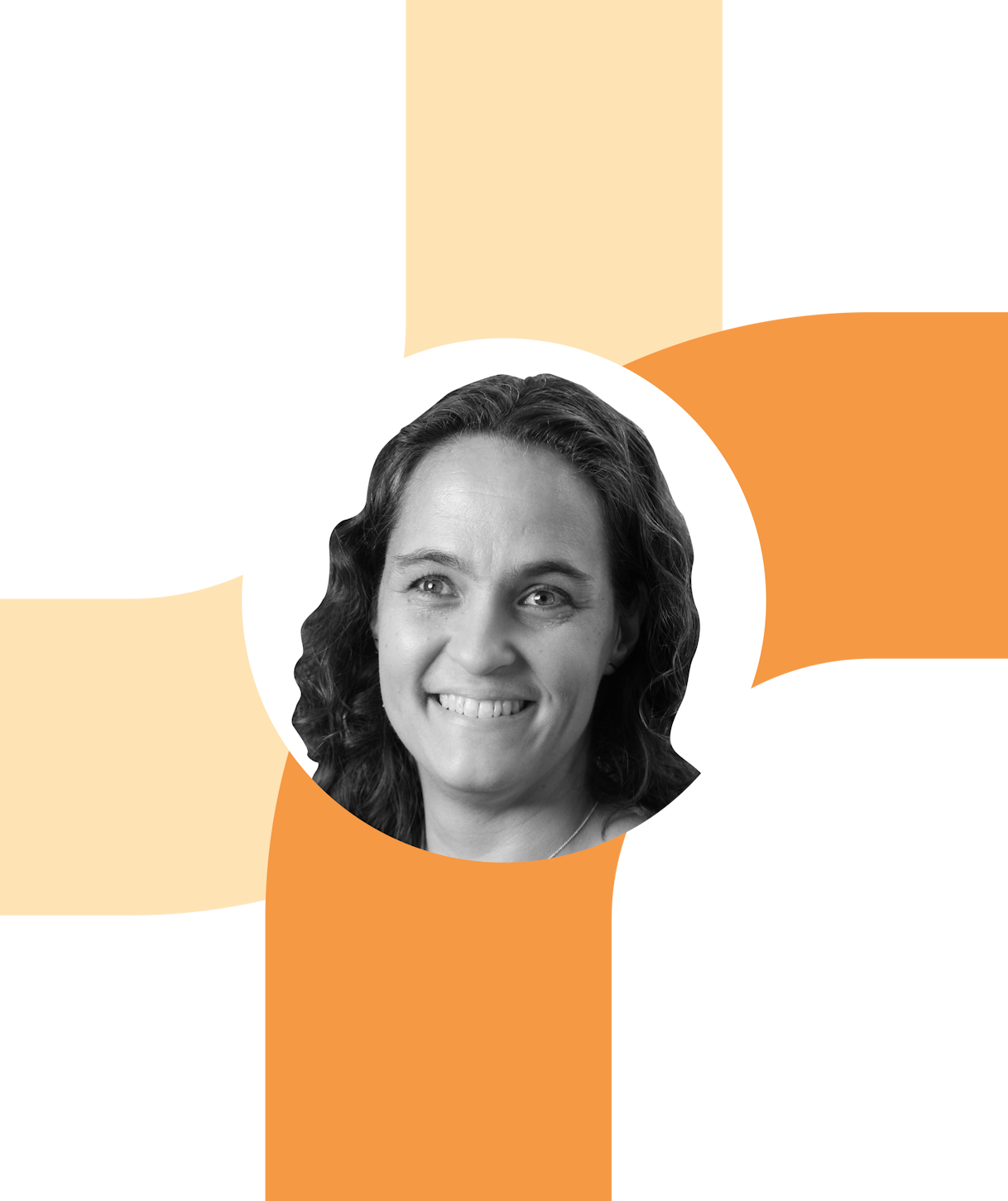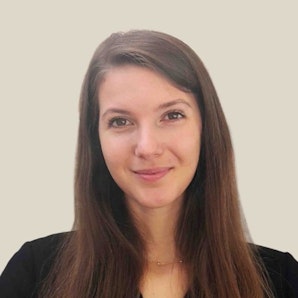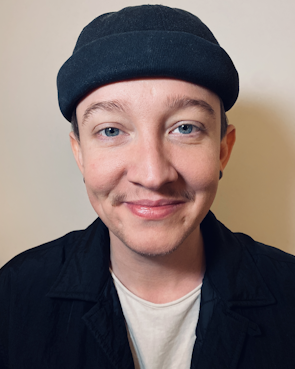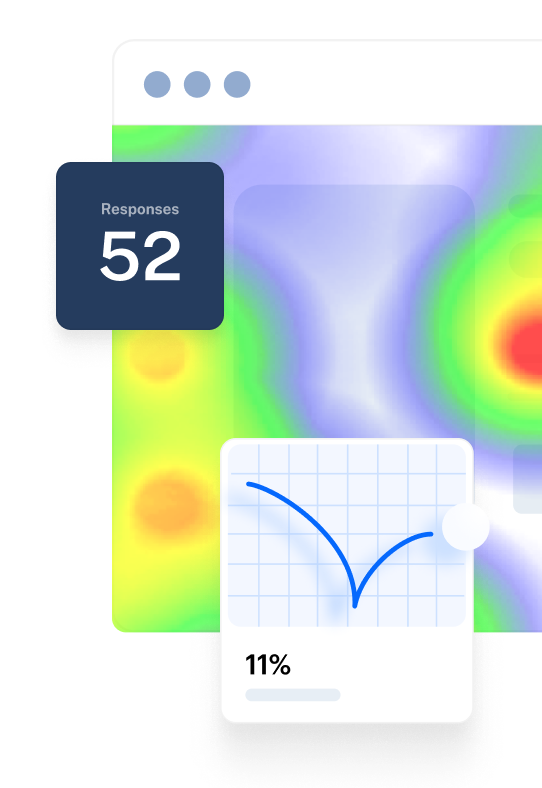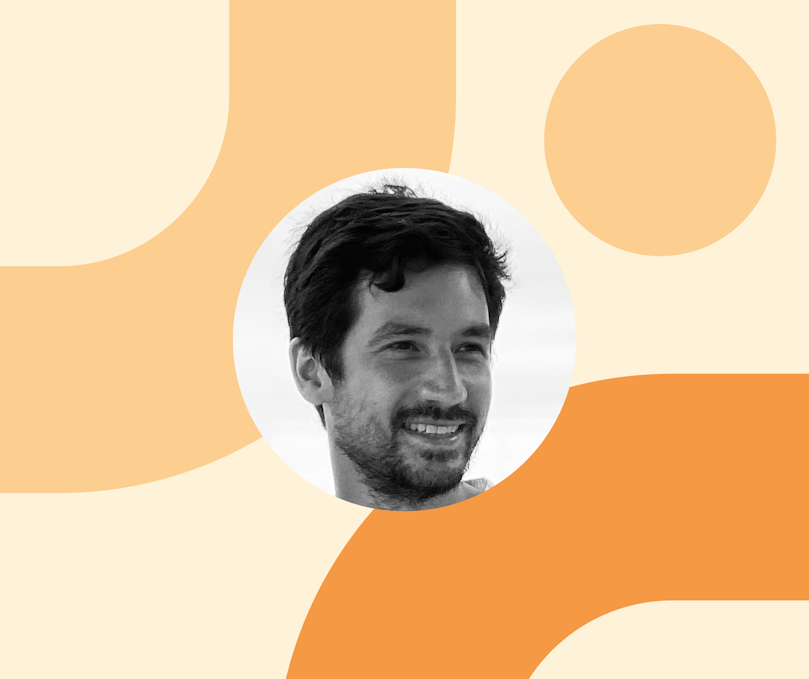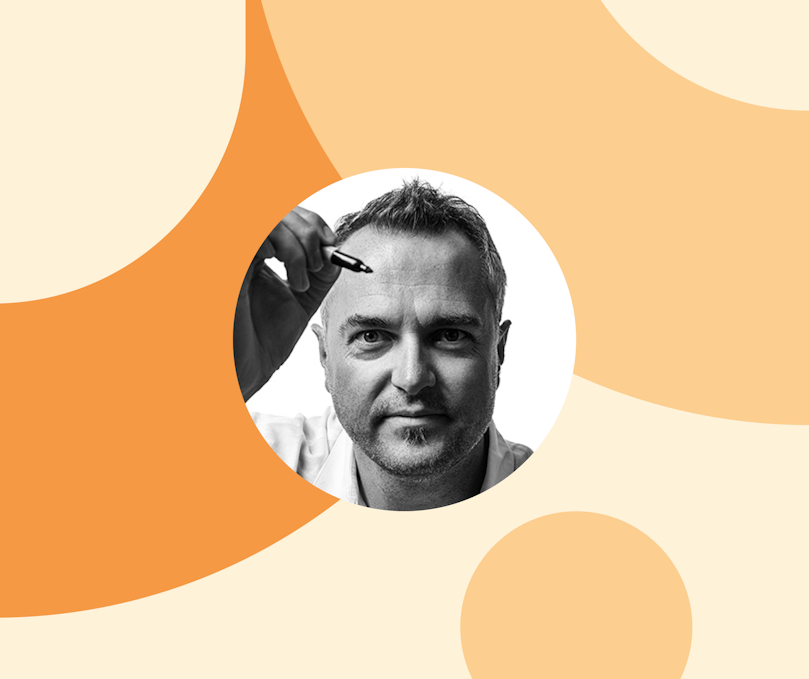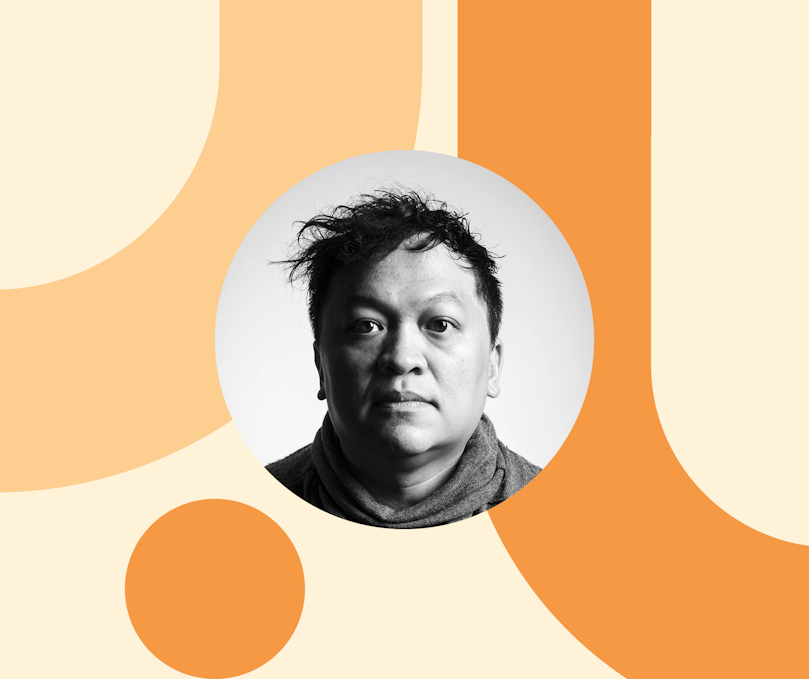Having been first introduced to human-centered design when she was in college, Teresa Torres graduated believing that was just how the business world worked. So when she got her first job as a front-end developer and interaction designer at HighWire Press, it was eye-opening for her to learn otherwise. "It was very much a client shop, and for the most part, we built what they told us to," Teresa says. "The end-user didn't really play a role in the process."
Everywhere she worked, Teresa saw the same problem—people didn't spend enough time with their customers. But how can you design and build great products if you don't have first-hand exposure to your end-user? That's when Teresa decided she wanted to help product teams address this problem.
Today, Teresa Torres is an internationally acclaimed author, speaker, and product discovery coach. She teaches a structured and sustainable approach to continuous product discovery that helps product teams make effective product decisions with customer input. She's the founder of The Product Talk Academy and is the author of the book Continuous Discovery Habits and blogs at ProductTalk.org.
We spoke with Teresa to learn more about the methodology of continuous discovery, how to implement it, and why the key to good products lies in creating a continuous feedback loop between your product ideas and your customers.
The value of continuous discovery
“Discovery represents the work we do to make good decisions about what to build,” explains Teresa. “Historically, businesses made discovery decisions by just sitting in a room and thinking ‘what should we build?’ Over the last 20 years, we've seen an evolution toward including the customer a lot more in the process.”
"We're shifting from output-focus to outcome-focus. So we're looking at the impact of what we're building. And then we're looking at how we create value by discovering customer needs, pain points, and desires, and then discovering solutions that address those opportunities."
In a digital product world, however, a product is never finished. "We're never boxing something and then shipping it onto a store shelf. We can constantly improve a product," Teresa points out. There are many product examples that show this continuous evolution. If we look at Netflix, they started as a DVD-by-mail company, evolved to a streaming company, and are now making their original content.
A digital product is never done. So we want to make sure we're getting constant feedback from our customers about whether or not we're building the right things.

Teresa Torres
Author and product discovery coach
Share
That’s where continuous discovery comes in. Teresa defines continuous discovery as follows: “At a minimum, weekly touchpoints with customers by the team building the product, where they're conducting small research activities in pursuit of a desired product outcome.”
"When I first started talking about this weekly cadence, people thought I was crazy. But that's changing," she says. "I meet teams all the time that are now engaging with customers weekly. We have excellent tools that help facilitate that. And while there's still plenty of people that are not doing any research, I think it's rare to find a team that isn't aware of these ideas and isn't starting to look at how to move in this direction."
With this in mind, we asked Teresa about some of the key concepts in her book, Continuous Discovery Habits, and recommendations for implementing them.
Build a collaborative decision-making model
A key part of the definition of continuous discovery is that the team building the product has to engage with customers directly. That will make the research actionable, believable, and timely.
Teresa introduces the concept of a “product trio”—a cross-functional team comprised of a product manager, a designer, and a software engineer that's jointly responsible for product decision-making. But how can you cross-collaborate successfully to make good decisions?
The way to make this model work is twofold. First, product trios need to conduct research together so they can work from the same knowledge base. Second, they need to externalize their thinking visually to stay aligned. Let’s see what that looks like in practice.
Discover opportunities through continuous customer interviews
Teresa encourages teams to interview customers weekly. The goal of those interviews is to discover opportunities—customer needs, pain points, or desires.
"The biggest mistake I see with interviewing is that people are just asking the wrong questions, or they're talking to the wrong person," she says.
According to Teresa, the first thing to do to avoid the anti-patterns of continuous interviewing is to make sure you're talking to somebody who's experiencing the need you're trying to address. The second is to ask the right questions.
We don't want to build our products based on people's ideal selves. We want to build products based on their actual selves.

Teresa Torres
Author and product discovery coach
Share
One tip Teresa recommends is to keep interviews grounded in specific stories in the past. If you’re interviewing customers for a streaming service and ask, ‘What do you like to watch?’ the answers won’t always reflect what happens in reality. “Cognitive biases are going to interfere. Maybe you'll tell me all about the documentaries you watched, but you're going to leave out reality TV.”
“As humans, we tend to think we have better habits and behaviors than we do. But we don't want to build our products based on people's ideal selves. We want to build products based on their actual selves.” So instead, ask, 'Tell me about the last time you watched our streaming service.' You'll get much more reliable answers.
Use visuals to externalize your thinking
With every customer interview they conduct, teams take in a lot of data, identify different opportunities, and generate multiple solutions.
"When a team is just trying to hold all the information in their head and make decisions based on it, they're going to fall prey to many cognitive biases," says Teresa. "They're going to respond to the most recent or salient things. Those are not necessarily the most impactful aspects when you're looking at the impact on your outcome."
That's why teams should use visuals to externalize their thinking and synthesize what they're learning in discovery. "[By doing so], you're freeing up your working memory. You don't need to hold all the pieces in your head and have more cognitive energy to process and examine information."
But the value of externalizing your thinking doesn’t end here. “When you're working in a group, everybody's working from a different source of knowledge, and that's what makes it hard to align.” Visuals help everyone on the team see what’s in other people’s heads and build a shared understanding.
There are three main visuals that work in concert with each other:
1. The experience map
Teresa recommends beginning with an experience map to start discovering the opportunity space. Each person in the product trio should draw what they believe is the current experience of their customers. Together, they should then co-create a shared map—a synthesis of all their individual perspectives. “What this exercise does is it exposes what you think you know, and more importantly, exposes where you have gaps in what you know, and it's going to guide your interviews,” states Teresa.
2. The interview snapshot
"Think about your experience map as like your pencil sketch. You now need to collect a story and test whether that experience map is true," Teresa explains. Customer interviews are essential to test if the experience map is accurate. So the second document a team should create is a one-page interview snapshot that includes all the opportunities and insights collected during each interview.
3. The Opportunity Solution Tree
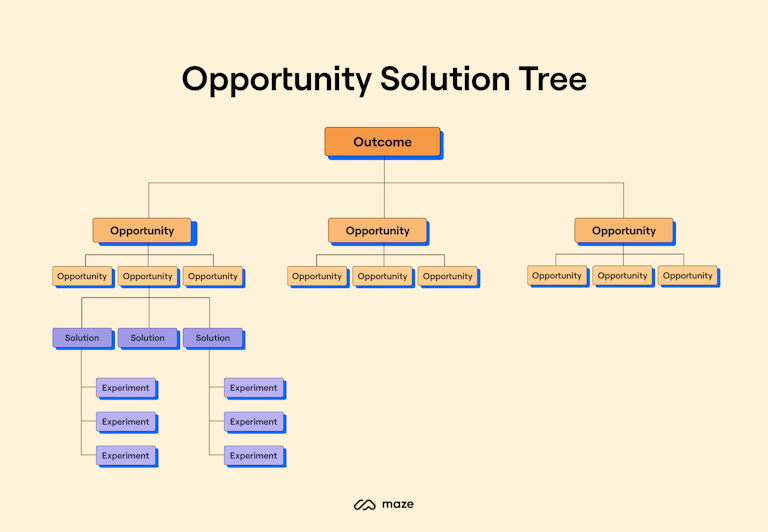
The Opportunity Solution Tree by Teresa Torres
Finally, a product trio should take all the opportunities heard in the interviews and start structuring the opportunity space. The Opportunity Solution Tree is a visual that helps a team visualize and map the best path to their desired outcome.
To build an opportunity solution tree, you should start with a clear outcome at the top of the tree and, from there, branch down into all the opportunities that emerged from your customer interviews. Once you've chosen a target opportunity, you can map the solutions you're exploring.
"Most opportunity spaces are pretty complex. So taking the time to map out and understand the opportunity space is a critical activity," explains Teresa. "It's going to give you the big picture of how you might reach your outcome and, as you work your way down the tree structure, it helps you break opportunities into more solvable, incremental iterations."
Tip 💡
Product discovery is an ongoing process. You should continuously synthesize what you’re learning and evolve your experience map and your opportunity solution tree accordingly, every three or four interviews.
Test assumptions, not ideas
Teresa explains that when it comes to discovering solutions, many teams work with one idea at a time. They do all the design work up front, build a working interactive prototype, and schedule a dozen prototype test sessions. Or even worse, they just develop the solution and run A/B tests hoping they built the right thing.
“Both of those methods are validation research, and we should do that. But there's plenty of discovery research we should be doing long before we get to those steps,” Teresa argues. “We don't want to do all the design work—and we definitely don’t want to do all the delivery work—before we know it's the right solution.”
The key to really understanding ‘Will a solution work?’ is to understand the assumptions it's based upon.

Teresa Torres
Author and product discovery coach
Share
A critical piece of good discovery is shifting from the “idea mindset” to the “assumption mindset.” Testing your assumptions is not a new concept. Eric Ries wrote about it in The Lean Startup. “The key to really understanding ‘Will a solution work?’ is to understand what are the assumptions it's based upon,” explains Teresa.
Assumptions fall into five categories: desirable, viable, feasible, usable, and ethical. “If we take the time to surface those underlying assumptions, assumption tests are a lot faster than idea tests.”
But there’s another benefit to consider:
If we test an idea and it fails, we're just back at the drawing board. Whereas if we test assumptions, we're collecting building blocks that work and don't work. And that helps us generate the next round of solutions that will be even better because we're taking into account what we learned.

Teresa Torres
Author and product discovery coach
Share
Putting theory into practice
"If we go back to my days at HighWire Press, everything went through my boss, who then talked to the client, who then talked to an editor, who then talked to the end-user," Teresa describes. "So I just started asking my boss, 'Can I sit in on the meetings with the client?' And then eventually, I got access to the editor. And then eventually to the end-user."
For Teresa, the first step to adopting the continuous discovery habits outlined in her book is to find a way to get close to your customers. “[For me], it didn’t happen overnight. The key is to be patient and start small.”
You cannot address every single opportunity that you hear. That's when visualizing the opportunity space becomes critical.

Teresa Torres
Author and product discovery coach
Share
Once you get exposure to your customers, her main piece of advice is to make sure you start visualizing the opportunity space. And there's a simple explanation for that. “When you first start interviewing, you're going to be inundated with so many customer problems," Teresa says. "The step that many teams miss is identifying the most important opportunity to focus on right now. And that decision is going to be different at different moments in time."



